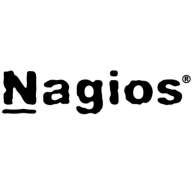

Nagios XI and IDERA Uptime Infrastructure Monitor are competing products in enterprise-grade monitoring solutions. IDERA Uptime Infrastructure Monitor is favored for its robust features, despite Nagios XI's slight advantage in pricing and support.
Features: Nagios XI offers comprehensive monitoring and supports a wide array of plugins, which makes it highly flexible. It allows extensive customization to fit various environments and provides scalability options. IDERA Uptime Infrastructure Monitor provides advanced reporting features and predictive analytics capabilities. It also offers in-depth visibility and intuitive out-of-the-box features for organizations.
Room for Improvement: Nagios XI could improve by simplifying its manual configuration process to reduce complexity. Enhancing the interface for easier navigation and improving vendor-based support options could greatly benefit users. IDERA Uptime Infrastructure Monitor could offer more competitive pricing and focus on enhancing its customization capabilities. Improving support for third-party integrations and expanding community-driven support options would be beneficial.
Ease of Deployment and Customer Service: Nagios XI requires manual configuration, making it complex for some users, while benefiting from a strong community-driven support network. IDERA Uptime Infrastructure Monitor offers an intuitive installation process and strong vendor-provided customer support, making it more accessible for organizations looking for streamlined deployment.
Pricing and ROI: Nagios XI is competitively priced, demanding a significant initial setup investment but providing long-term adaptability and customization potential for ROI. IDERA Uptime Infrastructure Monitor carries a higher upfront cost but achieves ROI through efficient deployment and comprehensive monitoring, helping to reduce downtime and improve infrastructure visibility.


Uptime Infrastructure Monitor helps IT administrators to unify performance monitoring and optimization of IT infrastructure. Unlike its competition, it provides monitoring of a broad range of platforms and applications, ability to set service-level agreements, and support of both agent and agentless monitoring.
Nagios XI provides monitoring of all mission-critical infrastructure components, including applications, services, operating systems, network protocols, systems metrics, and network infrastructure. Third-party add-ons provide tools for monitoring virtually all in-house and external applications, services, and systems.
Nagios XI uses a powerful Core 4 monitoring engine that provides users with the highest levels of server monitoring performance. This high degree of performance enables nearly limitless scalability and monitoring powers.
With Nagios XI, stakeholders can check up on their infrastructure status using the role-based web interface. Sophisticated dashboards enable access to monitoring information and third-party data. Administrators can easily set up permissions so users can only access the infrastructure they are authorized to view.
Nagios XI Benefits and Features
Some of the benefits and top features of using Nagios XI include:
Reviews from Real Users
Nagios XI stands out among its competitors for a number of reasons. Several major ones are its integration options and monitoring abilities, as well as its alerting features.
David P., a senior DevOps engineer at EML Payments Ltd, writes, “We use Nagios as a network discovery tool. We use Nagios to maintain our uptime statistics and to monitor our services. It has allowed us to be much more sophisticated in our monitoring and alerting.”
An IT-OSS manager at a comms service provider notes, “Nagios XI has a custom API feature, and we can expose custom APIs for our integration. This is a great feature.”
We monitor all IT Infrastructure Monitoring reviews to prevent fraudulent reviews and keep review quality high. We do not post reviews by company employees or direct competitors. We validate each review for authenticity via cross-reference with LinkedIn, and personal follow-up with the reviewer when necessary.